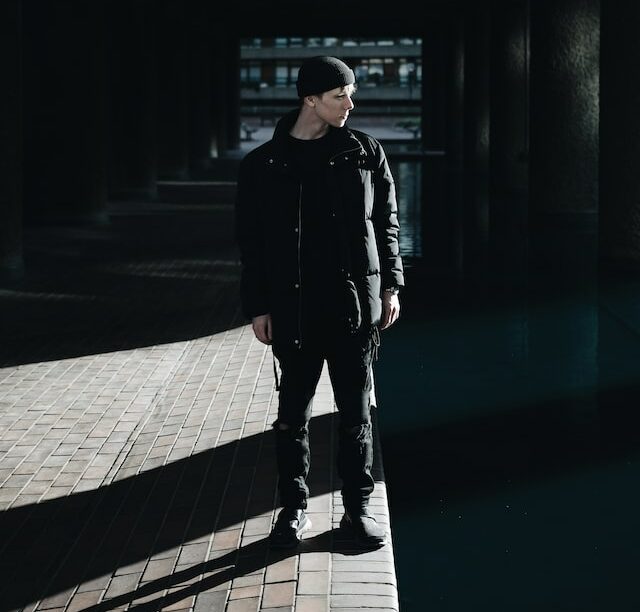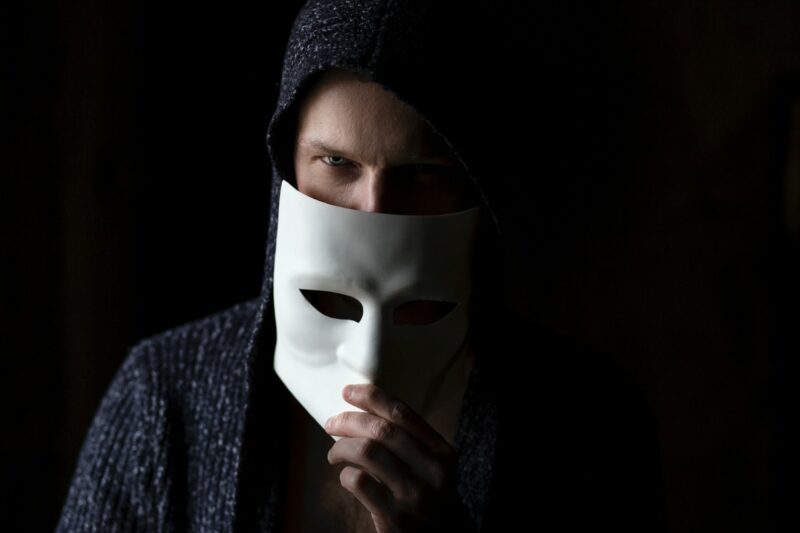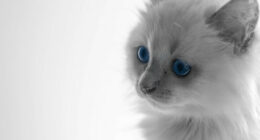An antagonist is a character who opposes the protagonist, while a villain is a character who does evil deeds. Both antagonists and villains can be found in stories, but they serve different purposes. An antagonist’s role is to create conflict for the protagonist, while a villain’s role is to provide an opponent for the hero to overcome. In some cases, a villain may also be an antagonist, but not all antagonists are villains.
How do you spot a villain or an antagonist
What’s the difference between an antagonist and a villain? It’s a question that’s been debated by writers and readers for years. Is a villain someone who is simply opposed to the protagonist, or is a villain someone who is evil?
The answer, of course, is that it depends on the story. There are antagonists who are evil, and there are villains who are simply misunderstood. It all comes down to the author’s intention.
Antagonist
(Photo by Keith Camilleri on Unsplash )

An antagonist is any character or force that opposes the protagonist, the main character in a story. An antagonist can be a person, a group of people, a society, an animal, or even an inanimate object. The main purpose of an antagonist is to create conflict and provide obstacles for the protagonist to overcome. Antagonists can be good or bad, and they can change throughout the story.
An antagonist is simply a character who is in conflict with the protagonist, or main character, of a story. The antagonist may not necessarily be evil, but they will be working against the protagonist in some way. An antagonist can be a force of nature, like a storm or an earthquake. They can also be an animal, like a shark or a bear. In some stories, the antagonist is even the protagonist’s own mind, like in the movie Fight Club.
Villain
A villain is a specific type of antagonist. A villain is typically portrayed as evil or malevolent, and their actions are meant to harm the protagonist or society as a whole. Villains are often the main source of conflict in a story, and their actions drive the plot forward. Unlike antagonists, villains are usually seen as evil and are often associated with negative traits like greed, cruelty, and dishonesty.
A villain is always a bad guy. Villains are usually motivated by evil intent, such as wanting to cause harm or destruction. While an antagonist may be in conflict with the protagonist, they are not necessarily trying to do them harm. A villain is almost always portrayed as evil. They might have goals that conflict with the protagonist, but their actions are always immoral. Villains are often motivated by power, money, or revenge.
The Difference Between Antagonist and Villain
So, in a story, the antagonist would be the one standing in the way of the protagonist’s goal, while the villain would be the one trying to thwart the protagonist’s plans. The villain is usually much more evil and diabolical than the antagonist, which is what makes them such iconic figures in stories.
Of course, there are always exceptions to the rule. Sometimes an antagonist can also be a villain, and sometimes a villain can be more of a nuisance than anything else. It all depends on how the story is written.
The Purpose of Antagonists and Villains in literature and movies
The purpose of an antagonist and a villain is to create conflict and tension in a story. Antagonists and villains provide obstacles for the protagonist to overcome, and their actions drive the plot forward. Without an antagonist or a villain, a story can become stagnant and lack excitement. Antagonists and villains also serve to make the protagonist more likable, as their actions contrast with the protagonist’s noble goals and moral values.
Antagonists and villains play a crucial role in literature and movies. They serve as the opposite force that the protagonist must overcome in order to achieve their goal. These characters not only add conflict to the story but also serve a deeper purpose in helping to define the protagonist and the story’s themes.
Types of Antagonists
There are different types of antagonists that can be found in literature and movies. These include:
- Human Antagonists: A human antagonist is a character who opposes the protagonist and is a person or group of people.
- Natural Antagonists: A natural antagonist is a force of nature, such as a hurricane or an earthquake, that serves as the main obstacle for the protagonist.
- Societal Antagonists: A societal antagonist is a cultural or political system that serves as the main obstacle for the protagonist.
Why are Antagonists and Villains Important in Literature and Movies?
Antagonists and villains serve several important purposes in literature and movies. These include:
- Adding Conflict: Antagonists and villains add conflict to the story, making it more interesting and engaging for the reader or viewer.
- Defining the Protagonist: Antagonists and villains serve to define the protagonist by highlighting their strengths and weaknesses. The protagonist’s journey to overcome the antagonist helps to define their character and motives.
- Exploring Themes: Antagonists and villains can be used to explore important themes, such as good versus evil, power and control, and the human condition.
How Antagonists and Villains are Portrayed in Literature and Movies
Antagonists and villains are often portrayed as complex characters with motivations and desires that drive their actions. They may be portrayed as evil, but they can also be seen as sympathetic characters who are driven by their own desires and motivations.
The Evolution of Antagonists and Villains in Literature and Movies
Over time, the portrayal of antagonists and villains in literature and movies has evolved. In the past, they were often portrayed as one-dimensional characters who were purely evil. However, more recently, they have been portrayed as complex characters with motivations and desires that drive their actions.
Examples of Antagonists in Movies and Literature
Antagonist vs Villain: The Difference
The key difference between an antagonist and a villain is their motivations and actions. An antagonist can be a complex and nuanced character who is simply at odds with the protagonist, while a villain is a more one-dimensional character who is motivated by evil or malevolent intentions.
Examples of Antagonists in Movies and Literature
One of the most famous examples of an antagonist in literature is Moriarty from Arthur Conan Doyle’s “Sherlock Holmes” stories. Moriarty is a genius criminal mastermind who is the archenemy of the detective Sherlock Holmes. Although he is a criminal, Moriarty is not necessarily evil, and his motivations are rooted in a desire for power and control.
Another classic example of an antagonist is Captain Ahab from the novel Moby-Dick. Captain Ahab is the main character’s adversary, but he is not necessarily evil. Instead, he is driven by an obsession to capture the white whale that took his leg. This creates conflict and obstacles for the protagonist, Ishmael, to overcome.
In the movie “The Dark Knight,” the character of the Joker serves as the antagonist. He is a chaotic and unpredictable force who creates chaos and destruction in Gotham City. While the Joker is certainly a villain, he is also a complex and multi-dimensional character who challenges Batman in new and unexpected ways.
Examples of Villains in Movies and Literature
One of the most iconic villains in literature is Voldemort from J.K. Rowling’s “Harry Potter” series. Voldemort is a dark wizard who seeks to conquer and control the wizarding world, and his evil intentions and actions drive the entire series.
In the movie “The Lion King,” Scar is the main villain. He is a deceitful and power-hungry character who plots to overthrow Mufasa and take control of the Pride Lands. Scar’s evil intentions and actions make him a classic example of a villain in film.
The Importance of Antagonists and Villains in Fiction
Antagonists and villains play an important role in fiction by creating conflict and tension in a story. They provide a challenge for the protagonist to overcome and drive the plot forward. In addition, they often serve as a reflection of the dark side of human nature and help to highlight the qualities and values that are important in life.
Some of well know Antagonists and Villains from movies and literature
Antagonists
- Moriarty from “Sherlock Holmes” by Arthur Conan Doyle
- The Joker from “The Dark Knight”
- Hannibal Lecter from “The Silence of the Lambs”
- Nurse Ratched from “One Flew Over the Cuckoo’s Nest”
- Gollum from “The Lord of the Rings” by J.R.R. Tolkien
- Magneto from the “X-Men” franchise
- The White Witch from “The Chronicles of Narnia” by C.S. Lewis
Villains
- Voldemort from “Harry Potter” by J.K. Rowling
- Scar from “The Lion King”
- Darth Vader from the “Star Wars” franchise
- Ursula from “The Little Mermaid”
- The Evil Queen from “Snow White”
- Norman Bates from “Psycho”
- The Wicked Witch of the West from “The Wizard of Oz”
These characters are some of the most well-known and memorable villains and antagonists in film and literature. They have left a lasting impact on audiences and continue to be celebrated and remembered for their unique and captivating personalities.
Can a hero be an Antagonist?
Yes, a hero can be an antagonist in certain circumstances. This is often referred to as an “antihero.” An antihero is a protagonist who lacks traditional heroic qualities such as honor, courage, and morality, but still manages to capture the audience’s attention and sympathy.
Here are a few examples of antiheroes from movies and TV who serve as both the hero and antagonist in their respective stories:
Tony Soprano from “The Sopranos” – Tony is a Mafia boss who is often seen committing violent and criminal acts, but is still considered the protagonist of the show as the audience follows his journey and struggles.
Walter White from “Breaking Bad” – Walter transforms from a high school chemistry teacher to a meth kingpin and is responsible for numerous illegal and unethical acts, yet he remains the central character of the series and elicits empathy from viewers.
Tyler Durden from “Fight Club” – Tyler is a charismatic and subversive character who leads a secret society of men and orchestrates acts of violence and destruction, yet he is still considered the hero by some as he challenges societal norms and conventions.
Here are a few examples of antiheroes in literature who serve as both the hero and antagonist in their respective stories:
Holden Caulfield from “The Catcher in the Rye” by J.D. Salinger – Holden is a troubled and disillusioned teenager who acts out and rebels against societal norms, yet he remains the central character of the novel and elicits empathy from readers.
Humbert Humbert from “Lolita” by Vladimir Nabokov – Humbert is a middle-aged literature professor who becomes obsessed with a young girl and engages in a sexual relationship with her, yet he remains the narrator and main character of the novel and elicits sympathy from readers.
Tom Ripley from “The Talented Mr. Ripley” by Patricia Highsmith – Tom is a manipulative and sociopathic character who is responsible for several murders, yet he remains the protagonist of the novel and elicits empathy from readers.
These examples illustrate how a hero can also be an antagonist in certain stories, adding layers of complexity and nuance to the character and story. An antihero can challenge traditional notions of good and evil and make for a more compelling and engaging narrative.
Photo by Sander Sammy on Unsplash








